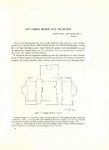| dc.creator | Μπακαλάκης, Γ. Μ. | el |
| dc.date.accessioned | 2015-07-30T08:01:19Z | |
| dc.date.available | 2015-07-30T08:01:19Z | |
| dc.date.issued | 1964 | |
| dc.identifier.uri | http://hdl.handle.net/11615/14825 | en |
| dc.description.abstract | The author adding to the already known example of a sepulchlar altar in the
collection of Komotini (OJh. 39 (1952) Beiblatt, I squ.) some other examples from
Thrace, thinks that their type must have been transplanted there, as well as to Macedonia
(Pella), from the Samos-Milet district, where it is very early at home. He
repeats that the roman sepulchral altars of the same type are not an «italiotic» invention,
but they continue the older ionian type. | en |
| dc.language.iso | el | en |
| dc.publisher | Υπηρεσία Αρχαιοτήτων και Αναστηλώσεως | el |
| dc.rights | Attribution-NonCommercial-NoDerivatives 4.0 International | en |
| dc.rights.uri | http://creativecommons.org/licenses/by-nc-nd/4.0/ | en |
| dc.subject | Archaeology - Archeology | en |
| dc.subject | Greece - Thrace | en |
| dc.subject | Tombstones altars | en |
| dc.subject | Archaeological findings | en |
| dc.subject | Αρχαιολογία | el |
| dc.subject | Ελλάδα - Θράκη | el |
| dc.subject | Επιτύμβιοι βωμοί | el |
| dc.subject | Αρχαιολογικά ευρήματα | el |
| dc.title | Επιτύμβιοι βωμοί από τη Θράκη | el |
| dc.type | journalArticle | en |
| heal.recordProvider | Πανεπιστήμιο Θεσσαλίας - Βιβλιοθήκη και Κέντρο Πληροφόρησης | el |
| heal.journalName | Αρχαιολογικόν Δελτίον | el |
| heal.fullTextAvailability | true | en |
| dc.rights.accessRights | free | en |
| dc.identifier.bibliographicCitation | Αρχαιολογικόν Δελτίον, 1960, Τόμος 18, Μελέται/Μέρος Α’, 161-165. | el |



